
|
Go to Jordan's main page, China Resources main page. |
Content created: 2013-05-24 File last modified: |

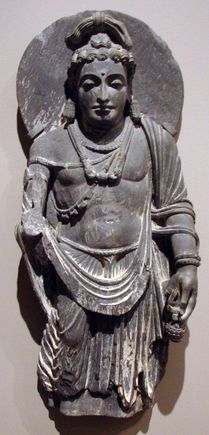
The Maitreya buddha (Mílè fó 弥勒佛) is the buddha who is to come among us in the future as a successor to the historical Shakyamuni buddha (Shìjiāmóuní fó 释迦牟尼佛).
Historians have sometimes suggested that his cult may be derived from the Iranian deity Mithra, since his story is not well worked out in early Buddhism. In southern Buddhism he is expected some millions or even billions of years into the future.
In China the Maitreya buddha is far more salient. For one thing, he may come at any minute, which makes him pre-adaptive to various religious movements centered upon leaders who claim to be preparing for him or even to be Maitreya themselves.
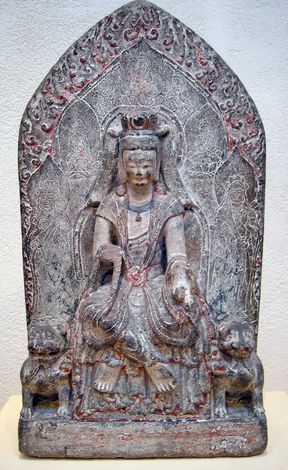
For another thing, mystics sometimes claim to have visited him during their meditation in the Tushita Heaven (Dōushuài Tiān 兠率天), where he is waiting for his appointed time, and countless spirit-writing texts claim to have been transmitted from him. (The widely distributed “Maitreya Descends to Earth” or Mìlè Xiàshēng Jīng 弥勒下生精 is an example.)
He is frequently shown in Buddhist art from all regions, but since he has not yet appeared, it is difficult to know what he should look like. The pictures on this page show him in sculptures from 3rd century Pakistan (above), 6th century China (left), and 11th century India (right below).
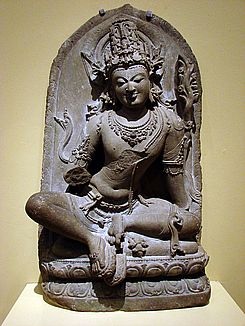
In China and the lands influenced by it the Maitreya buddha is often represented from about AD 1000 onward through his “pre-incarnation,” a legendary but possibly historical figure known as the “Cloth Bag Monk” (Bùdài Héshàng 布袋和尚) or “Cloth Bag Bodhisattva” (Bùdài Púsà 布袋菩萨) or sometimes “Cloth Bag Arhat (Bùdài Luóhàn 布袋罗汉).
This person is said to have had lived at the transition from the Táng 唐 dynasty (period 12) into one of its brief and geographically constricted successor states, the Latter Liáng 后梁 dynasty (period 13b), one of the Five Kingdoms (AD 907-960), in the area of Fènghuà County 奉化县 in what is today Zhèjiāng 浙江 Province.
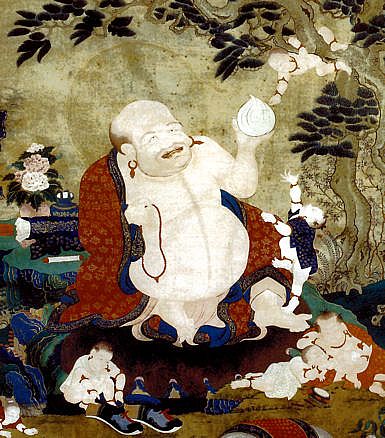 Tibet, XIXth Century
Tibet, XIXth CenturyIt is said that he wandered about as a disheveled beggar and fortune teller who spoke nonsense and was considered mad. Sources say that he slept out in the open, and apparently people claimed they could predict the weather based on the state of his sandals. Thus he received the nick name of Chángdīng Zǐ 长汀子 (“long beach kid” —think Surfer Dude).
Later tradition holds that he was also extremely fat. (Forget the Surfer Dude thing.)
We are told that he eventually took up residence at the nearby Yuèlín Sì 岳林寺 temple where he died after speaking the following provocative verse:
| Maitreya true Maitreya, has appeared billions of times and taught people of those eras. But they have not recognized him. |
弥勒真弥勒。分身千百亿。 时时示时人。 时人自不识。 Mílè zhēn Mílè. Fēnshēn qiān bǎi yì. Shshí shì shírén. Shírén zì bùshì. 彌勒真彌勒。分身千百億。 時時示時人。時人自不識。 |
In response, and perhaps in alarm, people decided he was surely a pre-incarnation of Maitreya, to whom they ought to have been paying a lot more attention, and so, it is said, they made a statue of him, and thus his cult was begun.
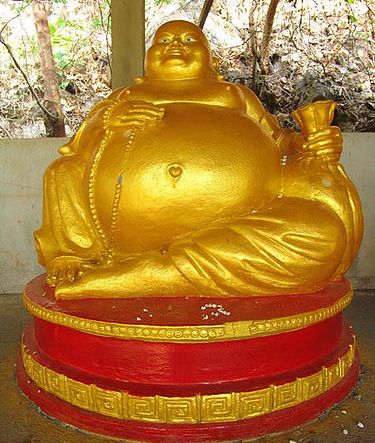 Thailand, near the Myanmar Border, XXth Century
Thailand, near the Myanmar Border, XXth CenturyThe Cloth Bag Monk is always shown as a fabulously pot-bellied man, usually with a rosary in his hand or around his neck. If he is not sitting down, he carries a bag of his belongings on a stick over his shoulder. He is thought to have loved children, and is shown as smiling and sometimes surrounded by children, to whom people say he gives gifts from an unending supply of toys in his bag. When he is seated, his vast belly is usually much larger than the sack.
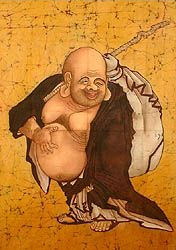
Chinese has a few turns of phrase that suggest the belly as the seat of consciousness, but the belly is also considered the source of tolerance and generosity. To have a large “belly capacity” (dùliàng dà 肚量大) is to be broad minded. To have a small “belly capacity” (dùliàng xiǎo 肚量小) is to be narrow minded.
Thus the representation of the future buddha as a jovial balloon is symbolically harmonic with his expected mission.
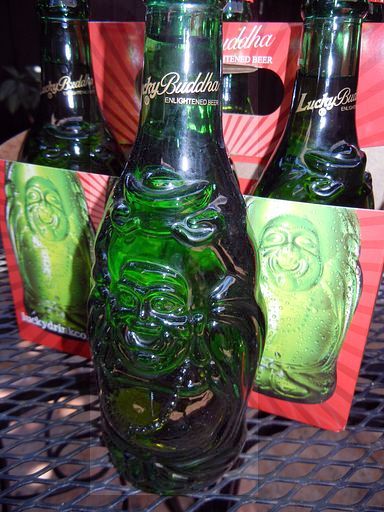
The Cloth Bag Monk appears in a few stories, but usually as a minor character. For example he is usually included among the guests at the famous “longevity peach feasts” popularly associated with the Daoist Queen Mother of the West (Xīwáng Mǔ 西王母), where he hangs out with the Eight Immortals.
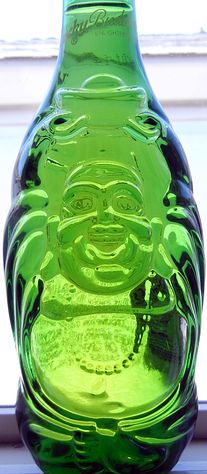
Occasionally he turns up as an arhat, although some believe that the arhat associated with him is an earlier pre-incarnation of Maitreya than is the Cloth Bag Monk. (Click here for a page about arhats.)
With his broad smile, his gigantic belly, and his magical sack, he has come to be beloved of painters and sculptors, but also to be used as a "lucky charm" on everything from New Year posters, garden gnomes, and cheap curios to mass-produced bottles for "Lucky Buddha Enlightened Beer" from Hángzhōu's irreverent Lucky Beer company.
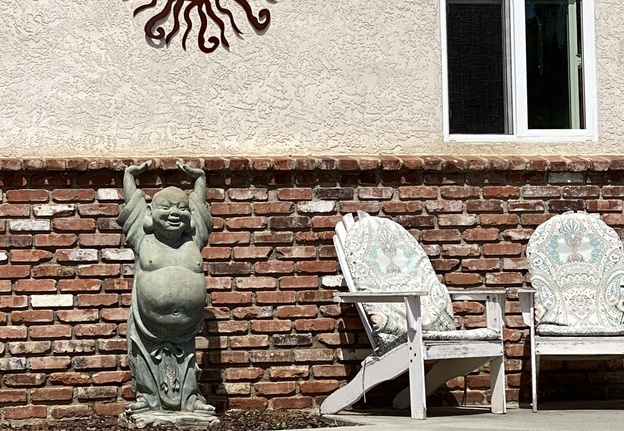
In his quality as a "wealth god" (cáishén 财神), he is often shown carrying a golden ingot, which is what he is holding above his head on the beer bottle. In America it is believed that rubbing his belly will bring you good luck. (If that works, it alone would make him marvellous —after all: how many fat people do you know whose bulging bellies can bring you good luck?)